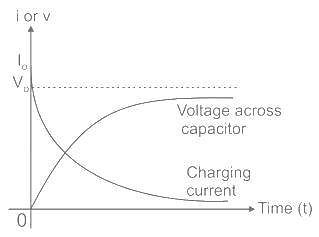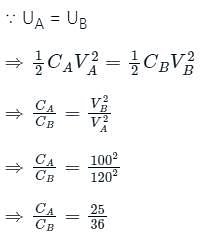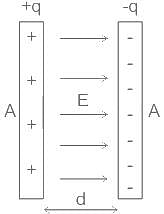Test: Energy Stored in a Capacitor - JEE MCQ
10 Questions MCQ Test - Test: Energy Stored in a Capacitor
The charging of a capacitor through a resistance follows
Capacitor A is charged by a 120 V battery and capacitor B is charged by 100 V battery. If the energy stored in both the capacitors is the same then find the ratio of the capacitance of capacitor A to capacitor B.
| 1 Crore+ students have signed up on EduRev. Have you? Download the App |
The work done in charging a capacitor is equal to? ('Q' is magnitude of charge on each plate of the capacitor between which the potential difference is 'V')
What is the energy density (energy stored per unit volume of space) of the parallel plate capacitor? (where E is the electric field between the two plates)
If the distance between the plates of a parallel plate capacitor is increased by maintain the constant charge on the capacitor, then the energy density between the plates will:
A capacitor that stores energy of 0.5 J, and has capacitance of 1 μF, has potential difference of ______ across it.
The energy stored in a parallel plate capacitor is E and the potential difference between the plates is V, then the E is related to V as:
Two capacitors A and B of capacitance C and 2C are connected in series across a potential difference V. Find the ratio of the energy stored in capacitor A to capacitor B.
A capacitor is charged by a battery. The battery is removed and another identical uncharged capacitor is connected in parallel. The total electrostatic energy of resulting system
A device which is used in our TV set, computer, radio set for storing the electric charge is





























 i.e. decreases by a factor (2)
i.e. decreases by a factor (2)














